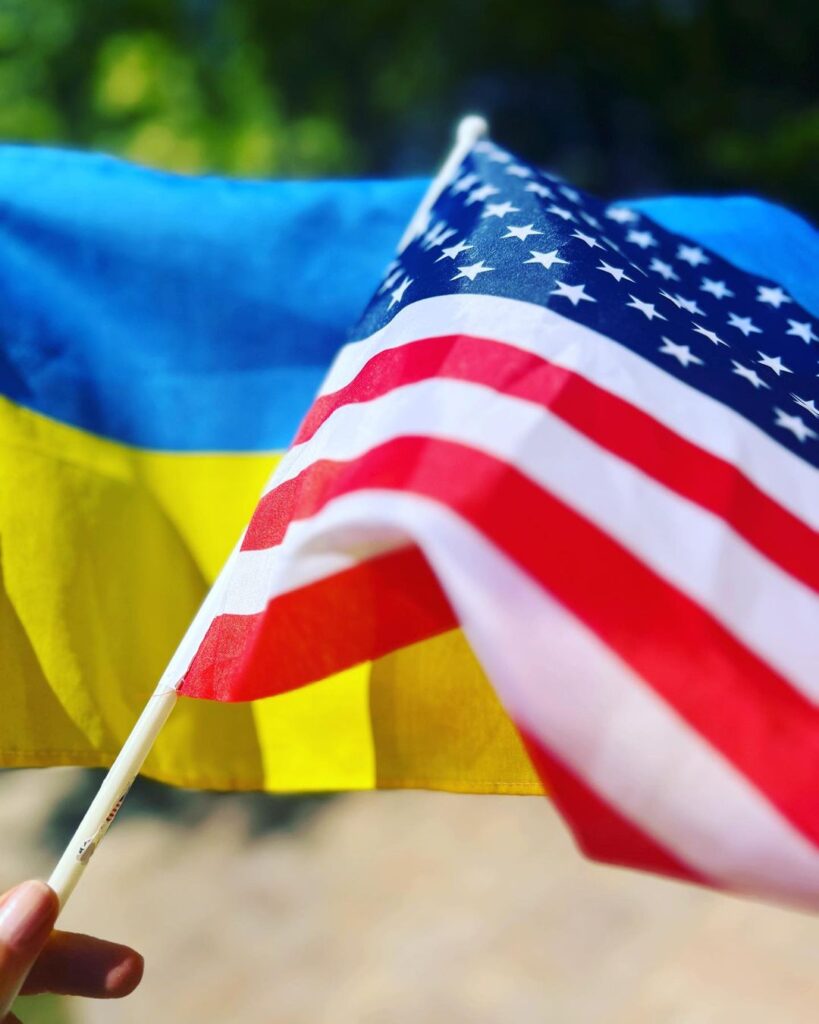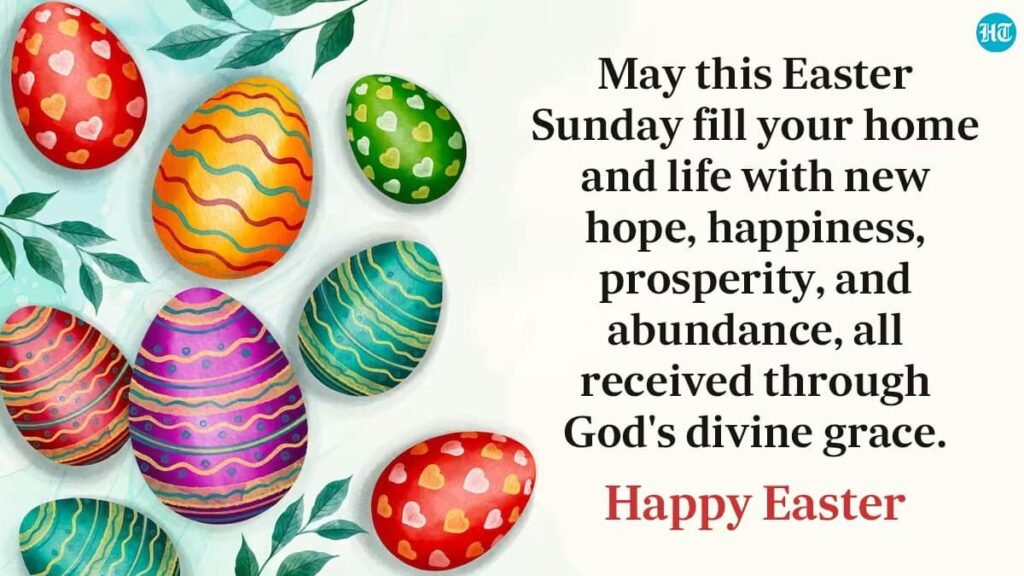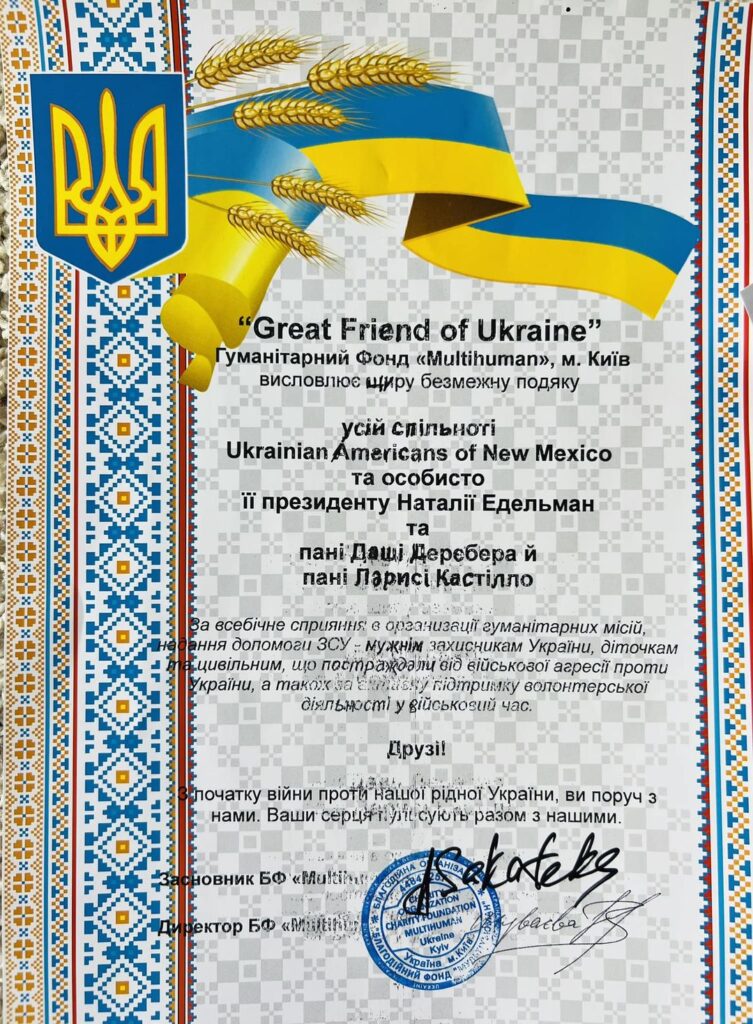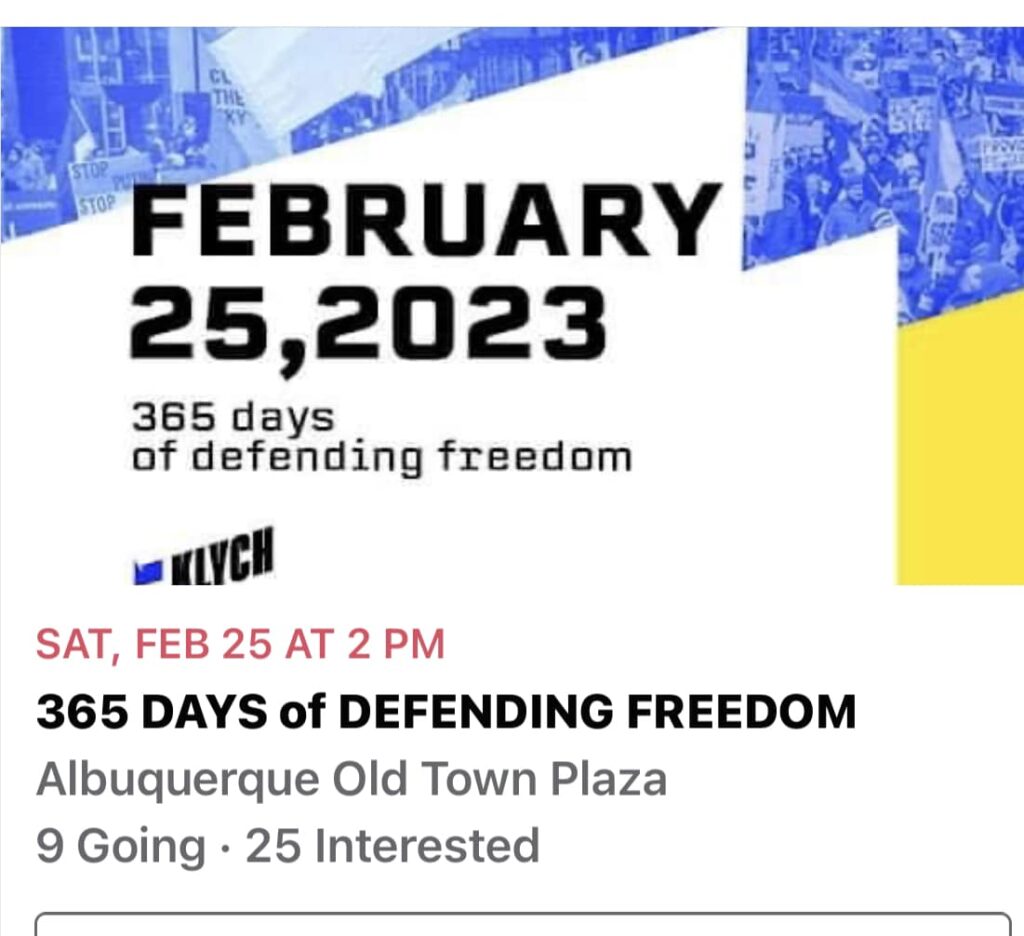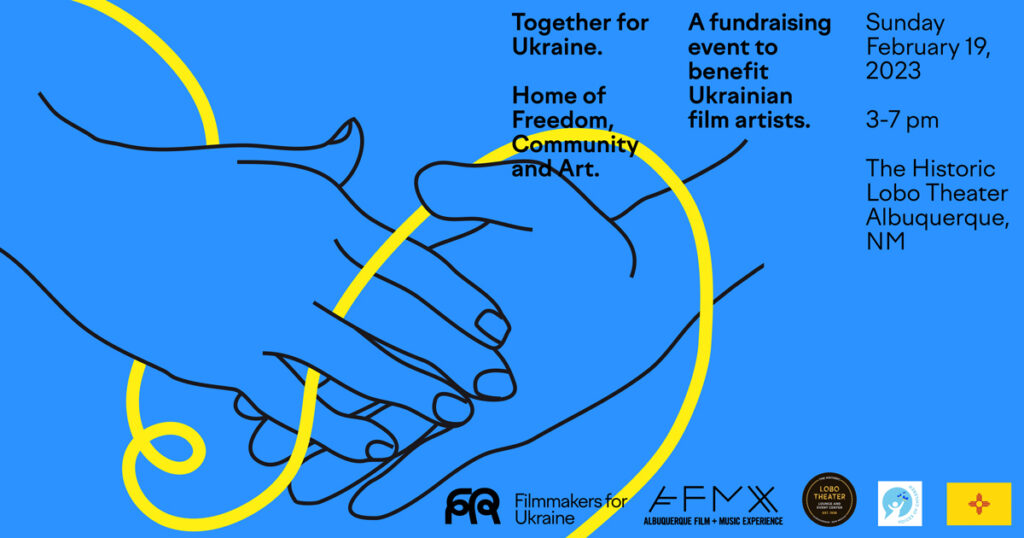UAofNM NM grateful to the U.S. and special to New Mexicans for providing both support for and an example of liberty . ![]() The American people stood with us and, we are sure, will stand with us to the end.
The American people stood with us and, we are sure, will stand with us to the end.
Wishing you the best and countless blessings on this momentous occasion!
“ Today, as Americans celebrate their freedom and independence, we celebrate with you and envision the day when every inch of Ukraine is free of the cruel tyranny that seeks to extinguish us,” Zelensky said.
